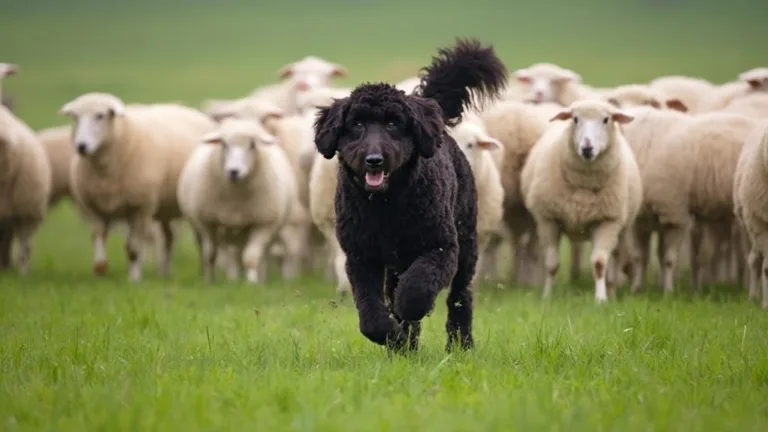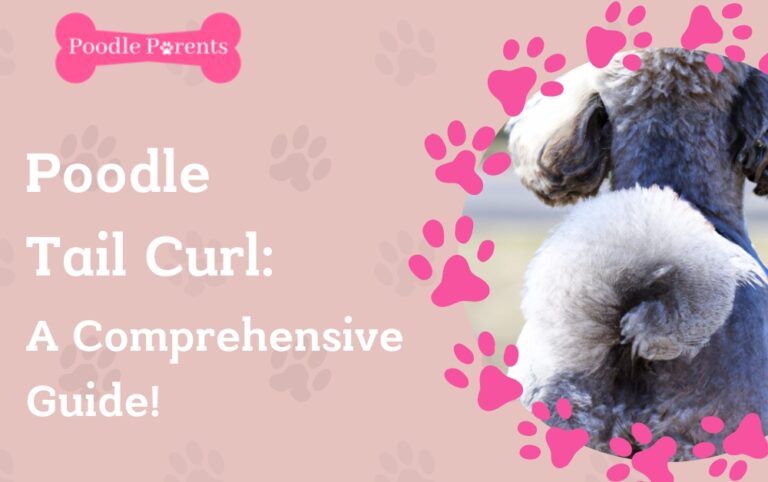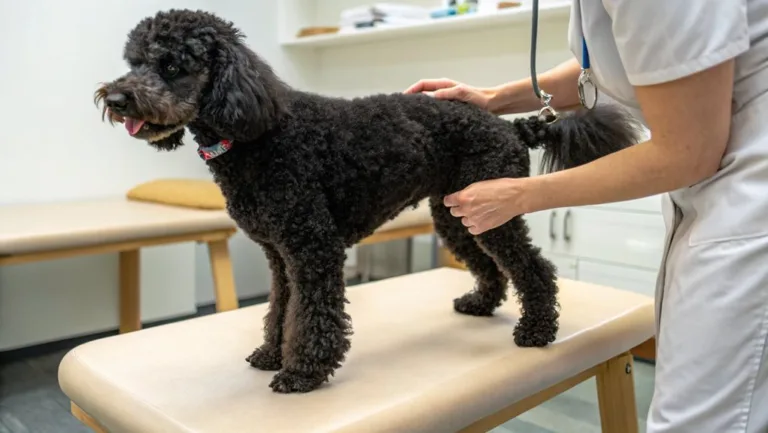Poodle Tails Undocked Vs. Docked: Pros And Cons

Poodles come in a variety of sizes, shapes, and colors. One feature that can vary among these dogs is the poodle tails undocked and docked.
It’s an important decision for any potential pet parent to make when considering this breed with far-reaching implications.
In this article, we’ll explore the pros and cons of having a poodle with either an undocked or a docked tail so you can make an informed choice about what’s best for your pup.
Tail docking has been controversial for some time; many people feel it should be banned altogether due to its perceived cruelty.
Others believe there are still benefits to tail docking if appropriately done, such as enhanced athletic performance in certain breeds like terriers.
What Is Poodle Tail Docking?
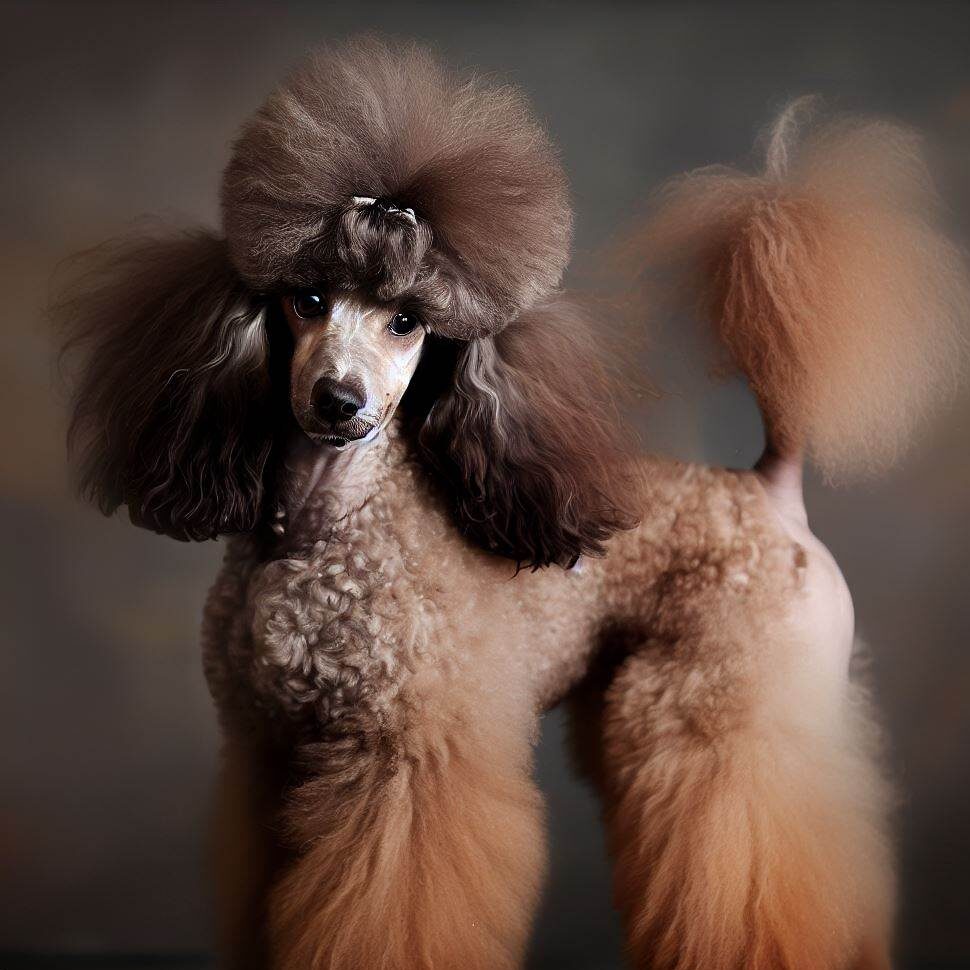
Every year, millions of poodles around the world have their tails docked. Tail docking in poodles has been a common practice for centuries and is still seen today.
Docking is when a dog’s or other animal’s tail is cut off to create an aesthetically pleasing look for confirmation standards and several reasons.
Some people believe that tail docking should be stopped because it can cause pain and suffering to the animal, while others argue that it’s necessary and doesn’t actually hurt them in any way.
Tail docking generally involves cutting off part of a puppy’s tail with scissors, a scalpel, or elastic bands to constrict blood flow until the tissue dies due to lack of oxygen. This process is usually done within 10 to 14 days after birth, although some breeders may dock later.
Dog tail docking has become increasingly controversial as more information comes out about its potential risks and effects on dogs’ behavior.
While no scientific studies show any long-term health benefits associated with this procedure, supporters claim that it potentially prevents future injury in the pup’s lifetime.
Supporters also point out that removing excess fur on the tail makes grooming more manageable and keeps dirt away from sensitive areas, which could lead to irritation or infection down the line.
On top of this, some owners feel like having a short stubby tail gives their pet an adorable appearance akin to what most people expect when they think of a ‘traditional’ Poodle look.
It’s important to remember that these are all subjective opinions. Everyone will have different views on whether tail docking should occur based on personal experiences and beliefs about animal rights/welfare issues.
Why Do Some Poodles Get Their Tails Docked?

Poodles are a distinct dog breed, and their curly tails have become synonymous with the look. However, some poodle owners choose to dock their pup’s tail for various reasons.
The primary reason people opt to dock their dogs’ tails is that it meets the breed standard established by the American Kennel Club.
This means that when competing in AKC conformation shows, a judge would prefer to see a docked tail on any Poodle being shown as this is how they feel the breed should appear per their standards.
The second major reason many dog owners choose to dock their poodle’s tail is for cosmetic purposes; having a shorter tail looks neater and more streamlined than a long tail that has not been docked.
Many other countries worldwide have banned docking due to ethical concerns over whether it causes unnecessary pain and suffering.
It is important to note, though, that most veterinarians who perform these procedures use anesthesia so that no harm comes to the animal during the process itself.
Ultimately, it will be up to individual dog owners as well as local laws regarding whether a Poodle’s tail should be docked or left alone – each situation requires careful consideration before making a final decision about what is best for your pup.
Docking has its own benefits and drawbacks, which must be considered when deciding whether or not it’s right for your pet.
While there may never be unanimous agreement among breeders and owners alike concerning this subject matter, understanding both sides offers valuable insight into how best to proceed, given your particular needs and circumstances.
The History And Controversy Of Poodle Tail Docking
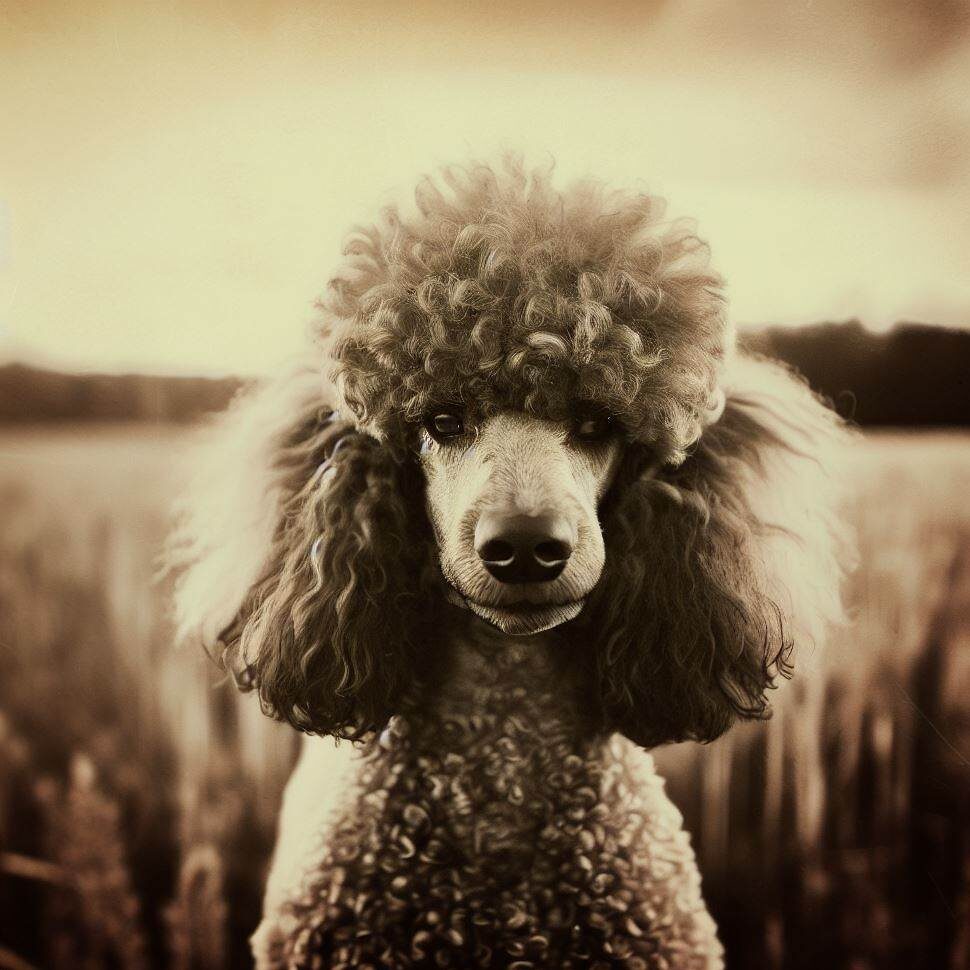
Tail docking is a controversial procedure that involves removing part of an animal’s tail. The practice has been used on poodles for centuries to make them more aerodynamic when retrieving game in water.
Over the years, this docking procedure has become increasingly contentious due to ethical concerns about the well-being of puppies’ tails.
The idea behind tail docking dated back to medieval Europe and was originally intended as a way to protect hunting dogs from injury while they were working.
While some people still believe that there are benefits associated with tail docking, many modern organizations have come out against it, citing animal welfare issues.
In recent years, tail docking has become illegal in many countries worldwide, including Europe and Australia. In these places, veterinarians can no longer dock puppies’ tails unless it is medically necessary for health reasons.
Despite ongoing debates surrounding its use, tail docking remains a common practice among certain breeds of poodle today.
Many owners feel that by docking their pet’s tails, they are preserving the breed standards set forth by kennel clubs and protecting their animals from potential injuries while participating in sporting activities such as flyball or agility competitions.
The question then becomes whether those perceived benefits outweigh any potential harm caused by performing such a drastic procedure on an animal’s tail.
This topic will be addressed further in the next section, which explores the advantages and disadvantages of tail docking for poodles in greater detail.
The Pros and Cons of Poodle Tail Docking
Advantages And Disadvantages Of Tail Docking For Poodles
The age-old debate of whether or not to dock a poodle puppy’s tail has been continuing for years. It is an issue that can cause great contention among breeders, owners, and the general public alike.
To help understand this better, let us take a look at some of the advantages and disadvantages associated with docking poodles’ tails:
| Advantages of Tail Docking | Disadvantages of Tail Docking |
| Aesthetic Appeal – Many people feel that docked dogs look more pleasing to the eye than those with intact tails. It’s part of why certain breeds have become popular in recent years. | Loss of Expression – One downside to removing a dog’s tail is that it eliminates natural expressions like wagging, often used to communicate happiness, fear, or excitement. This means less communication between owner and pet which could lead to misunderstandings down the line. |
| Protection from Injury – Owners can protect their pup from potential injury by removing its tail before adulthood. This is especially important if the dog participates in activities such as agility or flyball, where there is a greater risk of harm due to constant movement and contact with other animals. | Painful Procedure – Although most veterinarians use anesthesia when performing tail docking surgeries, it remains incredibly painful for many puppies who experience discomfort afterward after being given post-op pain medication. |
| Easier Grooming – Longer tails can make grooming difficult because they may catch on objects or get tangled up in brush strokes. By removing the tail, you can significantly prevent these issues and simplify your pet’s care routine. | Higher Risk Of Infection – After surgery, there is always a risk of infection setting in due to improper care during recovery time or complications arising from too much activity shortly afterward. While antibiotics should be able to treat any infections caused by tail docking, it does remain one additional concern for owners considering this practice for their furry friends. |
Tail docking involves making a complex decision based on individual circumstances rather than opting for a blanket approach; understanding both sides helps owners make informed decisions about what option best suits them and their pup’s needs while ensuring animal welfare standards are maintained throughout all stages involved in the process.
The Impact Of Docking On Poodle Health And Behavior

Docking a poodle’s tail is a procedure commonly done by breeders and veterinarians to make puppies look more aesthetically pleasing.
However, some pros and cons should be considered when deciding whether or not to dock your pup’s tail.
The main concerns include potential chronic health issues and behavioral effects associated with docking the tail. In terms of health, surgical amputation of the dog’s tail can produce behaviors indicative of acute pain during the recovery period.
Complications from docking may also arise, including bleeding, infection, delayed healing, and necrosis.
There have been suggestions that dogs whose tails are docked may have underdeveloped pelvic musculature, as well as a higher incidence of incontinence; however, these correlations are inconclusive.
Behaviorally speaking, many consider the tail important for communication and conveying information about emotional states and social status. Studies suggest that tails provide more effective communication cues.
Thus, it has become apparent that docking could potentially lead to negative consequences in behavior though this has not been extensively studied yet.
The impact of docking on poodle health and behavior should certainly be considered before making a decision one way or another.
Other factors, such as cultural norms among certain breeds, will also influence an individual’s choice regarding their pet’s appearance. Ultimately, they must decide what best suits them and their furry friend.
Other Factors To Consider When Deciding Whether To Dock Your Poodle’s Tail
Making the decision to dock your poodle’s tail is like walking a tightrope: there are both pros and cons that need to be weighed carefully, with each side having its own merits. To make an informed decision, one needs to consider several factors before making a final judgment.
First, it’s important to research whether docking tails are allowed in your region. Breeders should also consult their local kennel club, such as the American Kennel Club (AKC), which has specific regulations regarding how dogs are shown in competitions.
Different countries have different laws regarding tail docking, so this could affect what breeders decide to do.
The medical implications of tail docking must not be ignored either; some argue that these procedures can cause behavioral issues later in life due to a lack of communication signals between mother and pup during nursing periods.
There is also evidence that suggests that docked tails can lead to spinal problems down the line if done incorrectly.
Finally, you should consider the aesthetic value of leaving your poodle’s tail undocked versus opting for a traditional look dictated by certain breeds’ standards.
Ultimately, your choice should always come back to considering what will result in the best outcome for your beloved pet’s long-term health and happiness.
Moving forward into researching how the procedure is done allows owners to take an even deeper dive into understanding all aspects of this difficult decision they face.
Grooming Tips For Poodles With Long Undocked Tails

The beauty of a poodle is unmistakable. From their silky fur to the graceful shape of their tails, these dogs are genuinely captivating creatures.
For those who have chosen to keep their poodle’s natural tail undocked, special grooming considerations must be taken into account.
Poodle owners with an undocked tail should understand that brushing their poodle’s coat and tail regularly will help them look and feel great.
Brushing the entire length of the tail helps remove dead hair and distribute natural oils throughout the fur. This also prevents tangles from forming in long-haired breeds. The brush used for this task should be soft enough not to cause discomfort or damage to the skin.
If neglected, mats can form along the length of the tail, which can require cutting if they become too difficult to comb out without causing pain or distress to your pup.
Longer tails may need more attention than those whose tails have been docked, as most breed standards suggest that the tail should be docked at birth for certain breeds, such as Standard Poodles, Miniature Poodles, Toy Poodles, and Schnauzers.
Nonetheless, it is important for all poodle owners – regardless of whether or not their pup has an undocked tail – to regularly brush their pet’s coat and take extra care when brushing their tail area so that it does not become matted or tangled up in knots over time.
Regularly checking for signs of matting after grooming sessions is wise practice; catching small mats early makes dealing with them more accessible than waiting until they get bigger!
Taking good care of your beloved pet’s coat will ensure they look gorgeous while helping maintain healthy skin beneath all that luxurious fur – no matter what kind of tail they possess!
With diligent care, even a poodle with an undocked tail can look stunning daily!
As we move forward, let us now discuss why understanding the importance of correct tail shape in breed standards is crucial for both showing success and overall health benefits alike.
Choosing the Best Tail Shape for Your Poodle

The Importance Of Tail Shape In Breed Standards
Here are three ways understanding tail shape will help you as a breeder:
1. Knowing which tail types are accepted under AKC rules can inform the decision whether or not to dock a dog’s tail.
2. Awareness of proper proportionality between body parts helps maintain consistency within each litter.
3. Understanding how specific tail shapes affect movement and performance during agility trials gives insight into which puppies may be better suited for those activities.
The tail shape holds significance beyond just physical aesthetics; having knowledge about what constitutes acceptable parameters can make all the difference when breeding top-tier poodles. Without this information, even experienced breeders could be disadvantaged if they don’t recognize potential problems early in their litters.
In order to keep up with current trends, being informed about the different types of tails available is essential for successful poodle breeding!
Conclusion – Poodle Tails Undocked Vs. Docked
In summary, the choice to dock a poodle’s tail is a personal decision that should be carefully weighed. Tail docking has been a longstanding practice in many poodle breeds, yet it remains a subject of debate due to welfare issues.
Those in favor of the procedure argue that it can avoid potential injuries and ease grooming, and present a more refined look.
On the other hand, opponents say that the act causes pain, and there is no scientific evidence that it is beneficial for the dog’s health. Consequently, the decision to dock a poodle’s tail must be based on the individual case and local laws.
Frequently Asked Questions (FAQ) About Poodle Tails Undocked
The end of the tail in a poodle with an undocked tail is just the natural end of the tail, without undergoing any procedures to shorten it.
The decision of whether a poodle will have an undocked tail is usually made within the first few days of life.
Any type of poodle can have an undocked tail, regardless of size or age. It ultimately comes down to the preference of the breeder or owner.
The tip of the tail in a poodle with an undocked tail is the naturally occurring end of the tail without any alteration.
A short tail in a poodle with an undocked tail is simply a tail that is not as long as the traditional docked tail of a poodle.
A poodle’s tail docked is a procedure where part of the tail is surgically removed, resulting in a shorter tail.
The usual length of a poodle’s tail varies depending on the breed, but the standard for poodles is typically up to 10 inches.
The reasons for docking a poodle’s tail vary, but some breeders and owners believe it is for aesthetic reasons or to prevent injury during activities.
The practice of docking a poodle’s tail involves surgically removing part of the tail to create a shorter length.
If poodles have their tails undocked, their tails would be longer and natural in appearance, usually ending in a tuft of fur.
Yes, it is still important to consider brushing your poodle’s tail if it is undocked to prevent matting and tangles, as their tail can grow longer and thicker.
Source: www.akc.com

